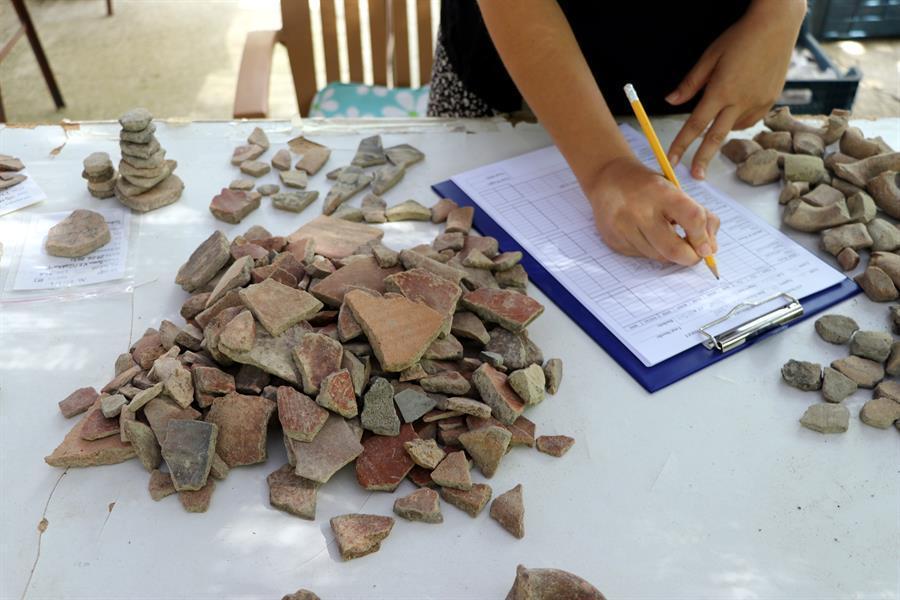
Archaeological excavations carried out on Aççana Mound in Alalah, the capital of the Mukish Kingdom during the Middle and Late Bronze Age in the southeastern province of Hatay, aim to unearth remains dating back 4,000 years.
In the mound, where the first excavations were carried out by British archaeologist Leonard Woolley in the 1930s, the 2021 season excavations have been carried out under the leadership of Hatay Mustafa Kemal University (MKU) Archeology Department Associate Professor Murat Akar with a team of 14 people.
Excavations in the mound, which is located on an area of approximately 22 hectares and whose ruins date back 4,000 years, are carried out at an average depth of 4.5 meters, covering an area of 120 square meters, which is called the temples area.
At the 3,400-year-old ruins in the temples area of the mound, works shed light on the culture, belief, lifestyle, trade and human mobility in Alalah, the capital of the Mukish Kingdom.
The finds obtained from the excavations are examined by experts at the Culture and Tourism Ministry Aççana Mound Excavation House.
Speaking to state-run Anadolu Agency, Akar said that Alalah is one of the most important archaeological sites in the Amik Plain, where traces of the Bronze Age can be unearthed.
“The Late Bronze Age is a period in which great empires emerged. This is a period when the Hittite Empire in Anatolia, the Egyptian Empire in the south and the Mitanni Empire on the Euphrates and Tigris axis emerged. The Amik Plain is the most important spot, where the traces of wars, diplomatic agreements and commercial relations of these great empires with each other can be traced. In other words, the Hittite Empire wanted to be an effective power in the Amik Plain, as did the Egyptian and Mitanni empires,” he said.
“One of the biggest reasons for this is its agricultural richness, which is also one of the most important features of the Amik Plain today. This is a geography that we can define as a food store for great empires. Another reason is its geopolitical importance, that is, it is located on all trade routes and interacts with all Eastern Mediterranean cultures with its connection to the sea. For this reason, in the studies we conducted here, we see the traces of the Mitanni Empire’s dominance in certain layers of the city, and in the following periods, we see that the city came under the control of the Hittites,” he added.
Akar reported that in the ancient DNA research they carried out in recent years, they obtained very important data on human mobility due to migration and trade, which took shape in the international age.
Stating that they have examined many human skeletons so far, Akar said, “The Amik Plain was the center of international activity in the Bronze Age but according to our analysis on the majority of the human skeletons found in the tombs here, these individuals represent the local population. In fact, this shows us the role and importance of the local people of the region in the international arena of the period, which is extremely exciting for us. Because while we were working here, we wanted to ask the following about this period, when there was international activity in the Late Bronze Age: If all the individuals we uncovered during the excavations at Aççana Mound describe the local community, where are the foreigners? For example, the Hittites who came to this region? This is a part of our work.”
Akar stated that the excavations in the region have been going on for 21 years and that they are trying to understand the temple and the urban texture shaped around the temple.
“Because we are in an excavation area, where we can obtain rich data about service buildings or workshops that were needed to keep the temple alive. In this area, where we have been working since 2012, we are trying to understand the development of the city in different cultural layers and its relationship with temples,” he said.